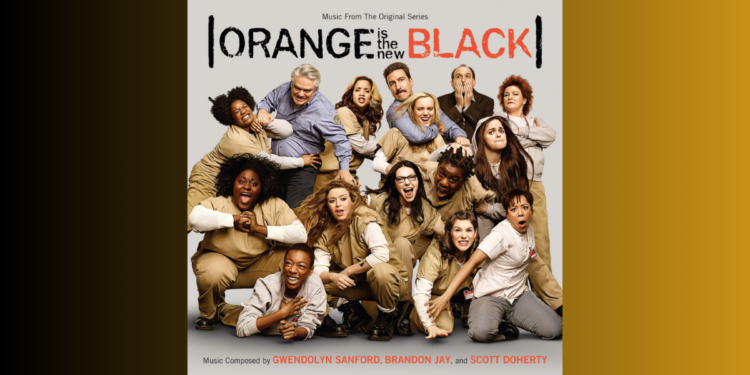“Orange Is the New Black”: A Riveting Tale of Incarceration, Identity, and Social Commentary
“Orange Is the New Black,” the groundbreaking Netflix series created by Jenji Kohan, is a triumph of storytelling that takes a deep dive into the world of female incarceration. With its unique blend of humor, drama, and social commentary, the show captivated audiences worldwide during its seven-season run from 2013 to 2019. In this comprehensive review, we’ll explore the various elements that make “Orange Is the New Black” an iconic series, including its characters, plot, themes, and its significance in the realm of television and cultural discourse.
Characters:
“Orange Is the New Black” boasts a rich and diverse ensemble cast, and its strength lies in the depth and complexity of its characters. The series introduces us to a wide range of inmates, each with her own story and struggles, as well as a cast of correctional officers and prison staff who contribute to the overall narrative. The character development throughout the series is one of its most exceptional features.
- Piper Chapman (Taylor Schilling): The series begins with Piper, a well-off white woman who is sentenced to 15 months in Litchfield Penitentiary for her involvement in a drug trafficking scheme with her ex-girlfriend. Piper’s character arc is a central focus of the show, as she navigates the challenges and transformations that prison life presents. Initially naïve and out of her element, she evolves over the seasons, reflecting the impact of her incarceration on her identity and values.
- Alex Vause (Laura Prepon): Piper’s on-again, off-again love interest, and partner in her criminal activities. Alex’s character is complex, and her troubled history with Piper adds layers to the show’s central romantic and emotional dynamics.
- Red (Kate Mulgrew): Galina “Red” Reznikov is a Russian immigrant and the kitchen head of Litchfield. Her character showcases the power dynamics within the prison and the complexity of inter-prisoner relationships. Red’s character experiences significant ups and downs, making her one of the most compelling figures in the series.
- Tasha “Taystee” Jefferson (Danielle Brooks): Taystee’s character undergoes profound growth throughout the series. She represents the injustices of the criminal justice system, initially imprisoned as a juvenile and grappling with her life sentence. Her character stands out as a symbol of resilience and the fight for justice.
- Crazy Eyes (Uzo Aduba): Suzanne Warren, known as “Crazy Eyes,” is a character who initially appears eccentric and unhinged but evolves into a deeply sympathetic and complex figure. Uzo Aduba’s performance as Crazy Eyes earned her critical acclaim and two Emmy Awards.
- Sophia Burset (Laverne Cox): A groundbreaking character, Sophia is a transgender woman who faces discrimination and challenges within the prison system. Laverne Cox’s portrayal of Sophia is significant in raising awareness of transgender issues and representation in media.
- Dayanara Diaz (Dascha Polanco): A character marked by her youth and vulnerability, Dayanara’s story highlights the difficulties of motherhood in prison, as well as the power dynamics between inmates and officers.
- Poussey Washington (Samira Wiley): Poussey is a fan favorite whose character arc is poignant and tragic. Her story explores issues of racial bias and injustice within the criminal justice system.
- Gloria Mendoza (Selenis Leyva): As the head of the Latina inmates, Gloria’s character provides insight into the complexities of identity and culture within the prison.
- Joe Caputo (Nick Sandow): Caputo’s character represents the moral ambiguities of the prison system. He transitions from a seemingly well-intentioned officer to a complex figure struggling with the system’s injustices.
The ensemble cast is extensive, with numerous other memorable characters, each contributing to the overarching narrative. The strength of the series lies in its ability to humanize these characters, revealing their multifaceted lives and the circumstances that led them to incarceration.
Plot:
“Orange Is the New Black” is based on the memoir of the same name by Piper Kerman, and it draws inspiration from her real-life experiences. The series unfolds primarily in Litchfield Penitentiary, a minimum-security women’s prison, and it takes viewers on a journey through the lives of the inmates and prison staff. The plot is episodic in nature, with each episode delving into the lives of different characters, providing flashbacks that shed light on their pasts and the events that led to their imprisonment.
The overarching narrative is framed by Piper Chapman’s journey as a fish out of water in the prison system. Her experiences serve as an entry point for viewers, allowing them to explore the world of Litchfield alongside her. The series continually alternates between the present-day struggles of the inmates and the flashbacks that reveal the complexities of their lives before incarceration.
Key narrative arcs throughout the series include issues of power and control within the prison, the impact of the criminal justice system on individuals, the complexities of interpersonal relationships among inmates, and the intersection of race, gender, and class in the prison environment. The narrative deftly handles both humor and drama, seamlessly transitioning between moments of levity and profound social commentary.
The series excels in addressing pressing social issues such as racial bias, systemic injustices, the challenges faced by transgender inmates, the impact of incarceration on families, and the difficulties of reintegration into society after release. These themes are interwoven with the characters’ stories, creating a compelling and thought-provoking narrative.
Themes:
“Orange Is the New Black” tackles a wide array of themes, many of which remain highly relevant in contemporary society:
- Incarceration and Justice: Central to the series is the exploration of the criminal justice system, the injustices it perpetuates, and the impact of incarceration on individuals and their families. The show raises crucial questions about the purpose of imprisonment and the need for reform.
- Power and Control: The prison environment serves as a microcosm of power dynamics within society at large. The series delves into the struggles for control and dominance among inmates, as well as between inmates and officers.
- Identity and Self-Discovery: Many characters in the series undergo significant personal transformations during their time in prison. Their experiences force them to confront their identities, past mistakes, and the person they want to become.
- Race and Inequality: “Orange Is the New Black” shines a spotlight on racial disparities within the criminal justice system. It underscores how women of color are disproportionately affected by harsh sentencing and racial bias.
- LGBTQ+ Issues: The series is notable for its representation of LGBTQ+ characters, including transgender women. It addresses the challenges they face, both inside and outside the prison system, and the importance of acceptance and visibility.
- Motherhood and Family: The difficulties of being a mother in prison are portrayed with sensitivity. The series examines the impact of incarceration on families and the ongoing challenges mothers face in maintaining their relationships with their children.
- Social Commentary: The show is a powerful vehicle for social commentary, addressing issues of class, gender, race, and systemic inequalities within the context of incarceration.
Significance in Contemporary Culture:
“Orange Is the New Black” has had a profound impact on contemporary culture and the landscape of television for several reasons:
- Representation: The series was groundbreaking for its diverse and inclusive cast, with a particular focus on the representation of women of color and LGBTQ+ characters. It has contributed to important discussions about the need for more diverse and authentic storytelling in media.
- Social Awareness: The show has been instrumental in raising awareness of the challenges faced by incarcerated women and the shortcomings of the criminal justice system. It has sparked conversations about prison reform and the need for more compassionate and effective approaches to rehabilitation.
- Complex Female Characters: “Orange Is the New Black” places women at the forefront of its narrative, offering a diverse array of complex and multifaceted female characters. It has challenged stereotypes and highlighted the agency and resilience of women from various backgrounds.
- Laverne Cox’s Impact: Laverne Cox’s portrayal of Sophia Burset has been particularly significant in advancing transgender representation in media and advocating for transgender rights and visibility.
- Critical Acclaim: The series received critical acclaim and numerous awards, including Emmy Awards, Golden Globe Awards, and Screen Actors Guild Awards, further cementing its place in the cultural zeitgeist.
- Impact on Streaming: “Orange Is the New Black” was one of the first original series on Netflix, contributing to the rise of streaming services as a viable platform for high-quality, original content.
In conclusion, “Orange Is the New Black” is a remarkable and thought-provoking series that has left an indelible mark on contemporary television and cultural discourse. It challenges societal norms and raises awareness of critical social issues, all while providing a platform for diverse and complex characters to shine. Its enduring legacy lies in its powerful storytelling, its ability to humanize those who are often marginalized, and its role in fostering important conversations about criminal justice, representation, and systemic inequalities. As a groundbreaking series, it will continue to be remembered for its contribution to the evolution of television and its impact on the broader social and cultural landscape.







